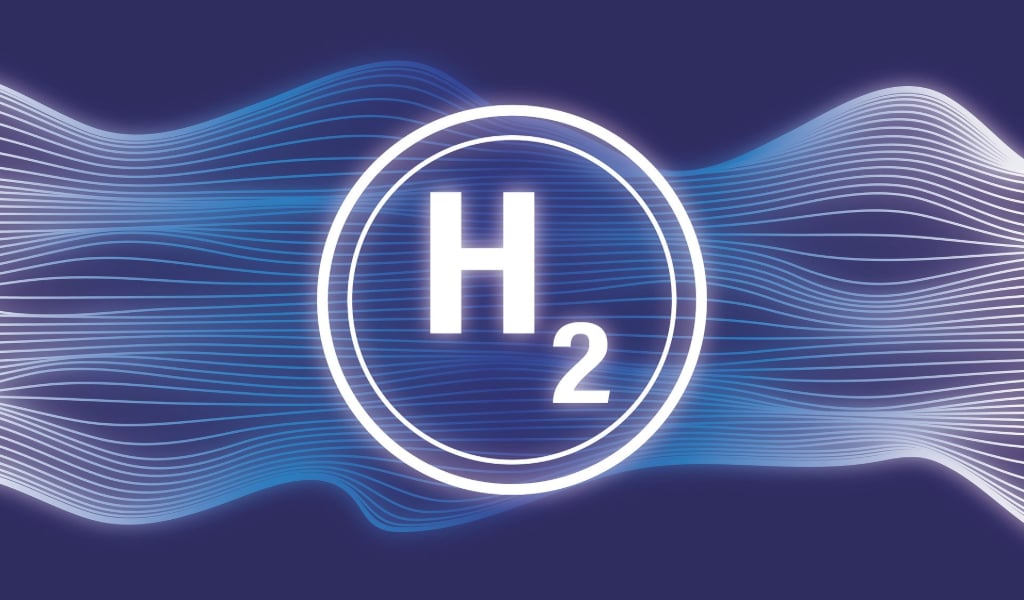Wire Mesh vs. Membrane Filters in Hydrogen Separation
Developing an effective hydrogen separation system requires a careful balance of efficiency, durability, and cost, all while meeting strict safety and purity requirements. While membrane filters have long been a go-to solution, they can introduce limitations, such as reduced lifespan under extreme pressures, higher replacement costs, and potential fouling issues in challenging environments.
Woven wire mesh offers a powerful alternative, delivering both structural strength and consistent performance over extended operating cycles. Its ability to maintain separation efficiency under high pressure and temperature conditions makes it a valuable choice for engineers looking to optimize reliability and reduce downtimes.
At W.S. Tyler, our mission is to make the world cleaner and safer through precision-engineered wire mesh solutions. With over 150 years of filtration expertise, we help engineers design separation systems that meet performance goals without compromising on longevity or cost-effectiveness.
In this article, we’ll explore the key differences between wire mesh and membrane filters for hydrogen separation. You’ll also learn how each technology performs under demanding conditions, the trade-offs to consider, and why wire mesh is increasingly being chosen for next-generation hydrogen applications.
Navigating the Divide: Wire Mesh and Membrane Filters in Hydrogen Filtration
Hydrogen separation is a critical step in industries ranging from clean energy production to chemical processing. The choice of filtration media directly impacts system efficiency, operational costs, and overall reliability. Membrane filters and woven wire mesh, two of the most common options, approach the challenge from very different angles.
Membrane filters rely on specialized materials and microscopic pores to selectively separate hydrogen from other gases or contaminants. This can offer high selectivity, but membranes are often sensitive to pressure fluctuations, temperature extremes, and particulate fouling, which can lead to reduced performance and increased maintenance needs.
On the other hand, woven wire mesh takes more of a mechanical separation approach, using precision-engineered apertures to provide consistent filtration while withstanding demanding operating environments. Its inherent durability and reusability make it well-suited for systems that require long-term reliability, minimal downtime, and easier cleaning or regeneration cycles.
Understanding where each technology excels, and where it falls short, is essential for selecting the right solution. By weighing factors such as operating pressure, separation efficiency, maintenance requirements, and lifecycle cost, engineers can make informed decisions that support both performance and economic goals.
Want to discover how woven wire mesh excels in performance with hydrogen? Read about it and more in our article below:
Performance Under Pressure: Comparing Separation Efficiency and Durability
Hydrogen separation systems rarely operate in gentle, lab-like conditions. High pressures, rapid pressure swings, temperature fluctuations, and exposure to moisture or contaminants are common, and they quickly reveal the often best choice for filtration material: woven wire mesh.
Membrane filters excel in controlled environments where precise molecular-level separation is the top priority. Their tight selectivity makes them ideal for applications where purity specs leave no room for compromise.
The trade-off, however, is sensitivity. Many membrane materials can suffer performance losses or even rupture under sustained high-pressure loads or repeated thermal cycling, leading to more frequent replacements.
Compared to membrane filters, woven wire mesh is built to endure. Its durable construction allows it to maintain structural integrity at elevated pressures and temperatures, while resisting damage from mechanical stress.
Although its separation threshold has a lower micron filtration size capacity, it offers the advantage of a long service life, reusability, and stable performance even in punishing operating environments.
When efficiency requirements collide with operational realities, understanding these durability differences can make the difference between a system that runs smoothly for years and one plagued by unplanned downtime.
Meeting Electrolyzer Demands: Materials, Conditions, and Mesh Design
Hydrogen electrolyzers operate in some of the harshest conditions in industrial filtration, where pressure, heat, and chemical exposure can quickly compromise underperforming materials. Inside the cell, components face sustained contact with caustic electrolytes, elevated temperatures, and dynamic gas formation.
All of these demand a filtration medium designed for long-term resilience.
Woven wire mesh excels in these environments by pairing mechanical stability with material versatility. Alloys like nickel and titanium are particularly well-suited, as they offer exceptional corrosion resistance in alkaline or acetic electrolytes while maintaining structural integrity under load. Nickel mesh also provides excellent electrical conductivity, while titanium’s high strength-to-weight ratio ensures durability without unnecessary mass.
Mesh design plays an equally critical role. Finer wires and higher mesh counts increase the surface area for gas release, which improves bubble detachment from electrode surfaces. This not only enhances hydrogen production efficiency but also reduces the risk of performance loss caused by trapped bubbles.
The result is a filtration medium that supports stable, continuous operation with minimal maintenance intervention.
When engineered for the exact demands of the electrolyzer environment, woven wire mesh offers a balance of efficiency, durability, and adaptability that membrane filters often struggle to match in similar high-stress applications.
Material Trade-Offs and Maintenance: What to Consider for Long-Term Operation
The choice between wire mesh vs. membrane filters isn’t just about optimal performance, it’s about how that performance holds up over time, and what it costs to keep it that way.
With unmatched selectivity, membrane filters deliver but they demand careful handling and frequent replacement. Many are sensitive to fouling, chemical degradation, and mechanical stress, which can shorten service life.
This often translates into higher ongoing costs, both in replacement parts and system downtime for maintenance.
In contrast, wire mesh is inherently rugged and easy to clean. Its metallic structure can withstand repeated backwashing, ultrasonic cleaning, or chemical rinsing without losing form or function. While it may not achieve the ultra-fine separation levels of certain membranes, its resilience can significantly reduce maintenance cycles and extend system uptime, which is an advantage that compounds over years of operation.
Ultimately, the decision comes down to your operating environment, budget priorities, and tolerance for downtime. By weighing these trade-offs early, you can align your filtration choice with both your performance goals and your long-term maintenance strategy.
Reliable Hydrogen Separation Starts with Smarter Filtration Choices
Meeting hydrogen separation goals takes more than simply choosing a filter that works for you today. It requires a solution that can maintain performance, efficiency, and reliability for years to come. As systems grow more advanced and operating demands intensify, the right material choice becomes a key driver of long-term success.
Wire mesh offers a proven path forward, especially when durability, cleanability, and consistent operation are top priorities. While membranes can provide acceptable separation precision, wire mesh’s resilience and lower maintenance needs often deliver a stronger return over the life of the system.
At W.S. Tyler, our mission is to make the world cleaner and safer through precision-engineered wire mesh solutions. With over 150 years of expertise, we help engineers and operators design filtration systems that align with both current performance requirements and long-term operational goals.
Interested in learning more about the importance of precision in woven wire mesh? Discover more in our article below:
About Dylan Polz
Dylan is a Content Writer with 2 years of experience in marketing and SEO. Passionate about learning and strengthening his writing skills, he is currently expanding his expertise in particle analysis and woven wire mesh technologies. With a strong belief in the power of information to drive positive change, his goal is to develop content that supports cleaner, safer solutions across all industries.



